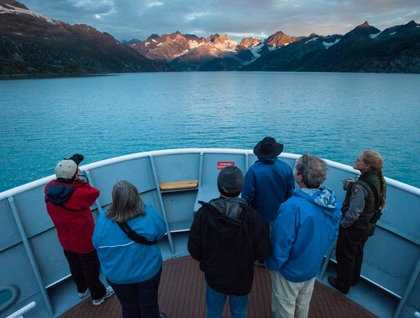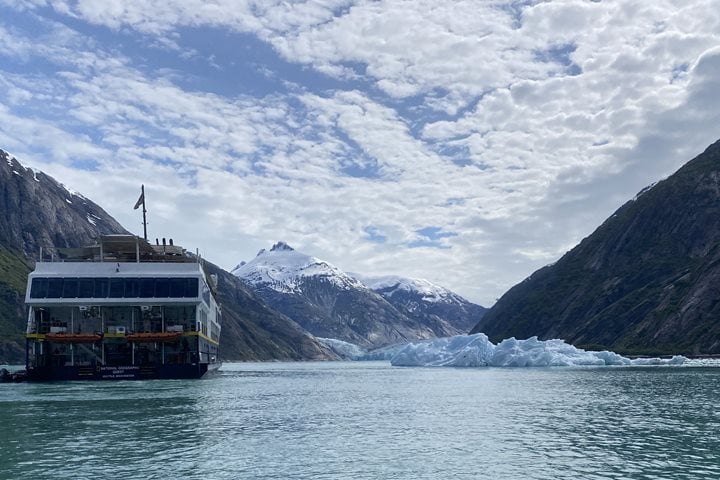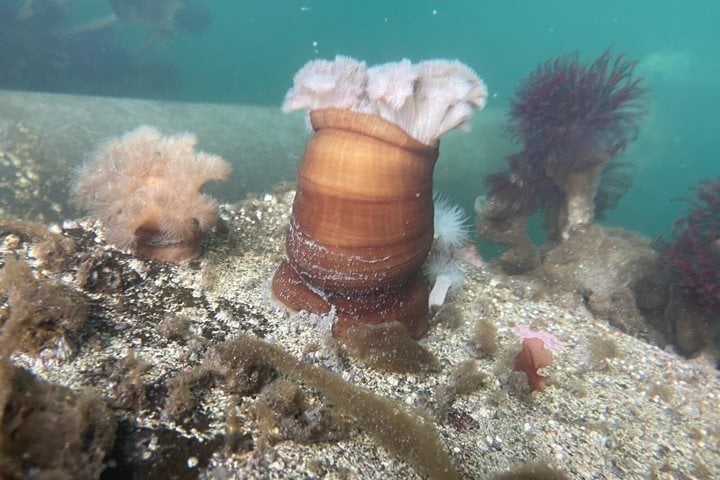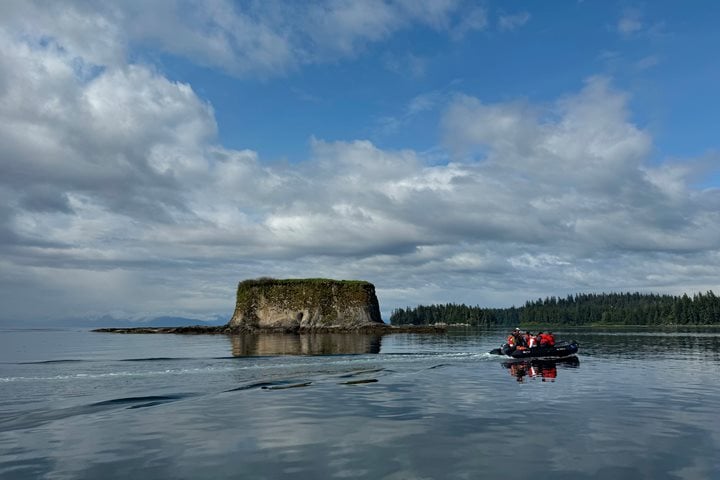Sunrise greeted us in its full glory as we wound our way down Johns Hopkins Inlet past Jaw Point on our way towards the Johns Hopkins Glacier in Glacier Bay National Park and World Heritage site. It is a real privilege to visit this glacier as it is closed for most of the season due to heavy pack ice and seals pupping their young. A few seals were resting on ice in the inlet—making for some great photo opportunities as the ship slowly passed them. More photo opportunities followed as the captain navigated the boat close to the massive face of the glacier.
After breakfast, the National Geographic Sea Bird began making the 65-mile trek back towards the entrance to Glacier Bay. Heidi Herter, a Park Ranger and William-Horton Garrison, a cultural interpreter, gave informative presentations on the history and importance of the park. Just before lunch, a brown bear and two cubs were sighted near a salmon stream, and we were able to watch the female catch a salmon before they disappeared into the lush forest.
In the evening, shortly after the ship wound its way past South Marble Island, a large group of killer whales was spotted in the fog and glassy calm water. At least 11 whales swam within sight of the ship for nearly an hour as our excellent expedition leader and the galley crew scrambled to rearrange the evening’s schedule to allow us to maximize our time with this magnificent and rare encounter.
As we said our goodbyes to ranger Herter, she shared a wonderful verse from memory by Robert Service’s Place With No Name that truly captures the spirit of this park:
There’s a land where the mountains are nameless,
And the rivers all run God knows where;
There are lives that are erring and aimless,
And deaths that just hang by a hair;
There are hardships that nobody reckons;
There are valleys unpeopled and still;
There’s a land— oh, it beckons and beckons,
And I want to go back— and I will.







